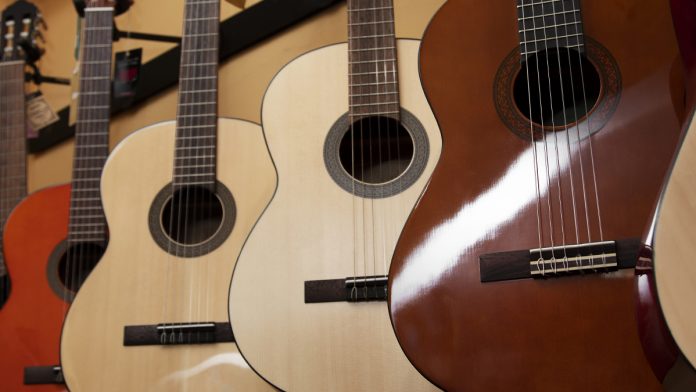The viola’s enchanting tone is the result of a subtle marriage between art and science. Its intricate sound quality is shaped by numerous physical principles and precise engineering choices. By examining the Physics and Engineering Behind Viola, we uncover how vibrational phenomena, material attributes, and mechanical designs merge to create an instrument that is both robust and expressive. This exploration provides insights into the scientific elements that influence tone production, sustain, and projection within the musical instruments industry, ultimately enhancing our understanding of this timeless instrument.
| Table of Contents | |
|---|---|
| I. | Vibrational Modes and Standing Waves |
| II. | Acoustic Resonance and Body Geometry |
| III. | Material Properties and Elasticity |
| IV. | String Tension and Vibrational Energy Transfer |
| V. | Bridge and Sound Post Mechanics |
| VI. | Frictional Interaction and Bow Dynamics |
| VII. | Helmholtz Resonance and Air-Body Interaction |
| VIII. | Damping Mechanisms and Vibration Sustain |
| IX. | Tuning and Mechanical Stability |
Vibrational Modes and Standing Waves
When the viola’s strings are played, they produce standing waves that define its unique sound. The instrument’s vibrational modes determine the rich overtones and harmonics essential to its character. As the bow interacts with the strings, differing frequencies are excited, influencing the texture and brightness of the tone. This phenomenon is central to the study of acoustics and is a tangible representation of the principles found in Physics Behind Viola, linking fundamental science directly with musical performance.
Acoustic Resonance and Body Geometry
The curved body of the viola acts as a resonating chamber that amplifies and refines the sound produced by its strings. Its carefully designed shape, including f-holes and arching, guides and enhances the vibrations, selectively boosting certain frequencies. This acoustic resonance is determined by the instrument’s geometry and construction materials, ensuring that every note resonates with warmth and balance. Such design ingenuity is key to the viola’s distinct voice in the musical instruments industry.
Material Properties and Elasticity
The quality and composition of wood used in a viola play a crucial role in its sound production. The inherent elasticity and grain structure of the chosen materials allow the instrument to vibrate sympathetically with the strings. This elasticity not only supports sound projection and sustain but also influences tonal coloration. Fine-tuning these material properties is vital, as each piece must harmonize with the instrument’s design to deliver both durability and a rich, nuanced sound.
String Tension and Vibrational Energy Transfer
The tension applied to a viola’s strings is fundamental in defining pitch and dynamic range. Adjusting this tension allows for optimal vibrational energy transfer from the bow to the string and ultimately to the resonant body. This energy conversion process affects both the loudness and clarity of the produced sound. Musicians and technicians alike must consider these factors closely to maintain the instrument’s expressive capability, ensuring that the inherent musicality is both precise and captivating.
Bridge and Sound Post Mechanics
Serving as the conduit for energy transfer, the viola’s bridge and sound post are meticulously crafted to balance vibrational transmission across the instrument’s body. Their design influences tonal projection and the instrument’s overall resonance. The precise engineering and placement of these components ensure structural integrity while optimizing sound quality. This synthesis of craftsmanship and design is a prime example of Engineering Behind Viola, where mechanical precision directly contributes to acoustical excellence.
Frictional Interaction and Bow Dynamics
The dynamic interplay between the bow and the viola’s strings is governed by friction. When the bow’s hair makes contact with the strings, it initiates and sustains controlled vibrations. The pressure, speed, and angle of the bowing action greatly affect the resulting tone and volume. This frictional interaction is not only a matter of technique but also a critical component of the instrument’s design, ensuring that expressive nuances are both achievable and consistent during performance.
Helmholtz Resonance and Air-Body Interaction
Inside the hollow body of the viola, Helmholtz resonance comes into play as the trapped air vibrates at characteristic frequencies. This air-body interaction enriches the instrument’s sound by adding depth and warmth. The size of the air cavity and the design of the sound holes significantly influence this phenomenon. By carefully controlling these parameters, luthiers can enhance the instrument’s tonal complexity, ensuring that every note carries clarity and character in various performance settings.
Damping Mechanisms and Vibration Sustain
Intrinsic damping mechanisms in the viola regulate the decay of sound, ensuring that vibrations do not linger excessively. These processes, governed by material absorption and structural design, help maintain tonal clarity by preventing unwanted overtones. Controlled energy loss is essential for achieving balanced sustain and crisp articulation. This understanding of vibrational decay is integral to the overall performance, a concept aptly described by Physics Behind Viola, which helps refine the instrument’s dynamic response and resonance.
Tuning and Mechanical Stability
Precision tuning and sustained mechanical stability are critical for the viola’s consistent performance. Advanced tuning pegs and secure mechanical linkages maintain string tension amid environmental fluctuations, ensuring reliable pitch and intonation. This focus on stability not only facilitates ease of performance but also guarantees longevity. Through innovative mechanisms and meticulous construction, manufacturers honor the heritage of the instrument while embracing modern advancements, an approach that epitomizes Engineering Behind Viola in the contemporary musical instruments industry.

